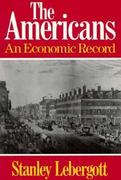Question
instructions Attempt all THREE (3) questions. Write answers to each question on A4-sized papers. For submission, scan all your answers. Where any calculation is required,
instructions Attempt all THREE (3) questions. Write answers to each question on A4-sized papers. For submission, scan all your answers. Where any calculation is required, show all the steps you take to reach your answer. No mark will be given if all necessary steps are not shown. Explain yourself legibly and clearly, showing all working Question 1 a Use an example to explain a situation where the Pareto efficiency criterion fails to identify the most efficient allocation of natural resources, and Kaldor's compensation test is required to do so. b Define negative externalities. Use a diagram, with an example, to explain the concept. c Use a diagram, with an example, to discuss whether you agree or disagree with the following statement. "Due to the incentive for people to understate their willingness to pay, public goods tend to be provided in insufficient quantities, resulting in an inefficient level of provision." d Use a diagram to discuss whether you agree or disagree with the following statement. "When the discount rate is zero, allocating the same quantity of exhaustible resources is always dynamically efficient." e Use the Hotelling model, with a diagram, to explain how the availability of a substitute (e.g., solar energy) influence the price and extraction path of exhaustible resources (e.g., oil). [Total: 15 marks]BEA207 Natural Resource Economics 3 Question 2 Suppose the government is trying to decide how much to spend on the conservation of biodiversity, the benefits of which are a public good for all community members. There are two groups in the community (Group 1 and Group 2), and each of them has the following inverse demand function: p1 = 1 - q and p2 = 1 - 0.5q where pi (i = 1,2) is the price each of the groups is willing to pay and q is the amount of biodiversity preserved. a Draw a diagram illustrating the inverse demand curves for Group 1 and Group 2 and the inverse demand curve for the community. (You need to draw three separate diagrams). b Suppose that a given amount of biodiversity can be preserved according to MC = q where MC is the marginal cost of preservation. What is the efficient amount of biodiversity preserved for the community? c If each group makes their decision independently, how much biodiversity will be preserved? Can the efficient level of preservation be achieved in this case? Why or why not? Explain your reasoning. BEA207 Natural Resource Economics 4 Question 3 a Define the statically efficient allocation of depletable resources. Define the dynamically efficient allocation of depletable resources. Use a diagram to explain the difference. Suppose that an inverse demand function for a depletable resource is given by: p = 10 - q where p is the price and q is the quantity. Assume that 6 units of the resource are available to be allocated between two periods. Assume that the marginal cost of supplying the resource in each period is $4. b In a statically efficient allocation, how much would be allocated to each period? Draw a diagram and explain your results. c In a dynamically efficient allocation, how much would be allocated to each period? Draw a diagram and explain your results. d Draw another diagram to explain the situation in which an allocation of depletable resources is efficient from both the static and dynamic point of view. Explain your reasoning.
Step by Step Solution
There are 3 Steps involved in it
Step: 1

Get Instant Access to Expert-Tailored Solutions
See step-by-step solutions with expert insights and AI powered tools for academic success
Step: 2

Step: 3

Ace Your Homework with AI
Get the answers you need in no time with our AI-driven, step-by-step assistance
Get Started


